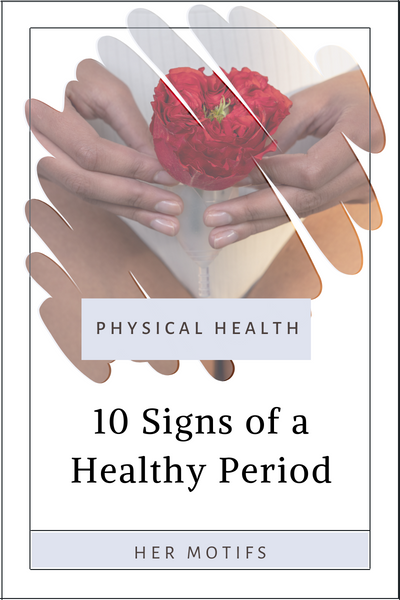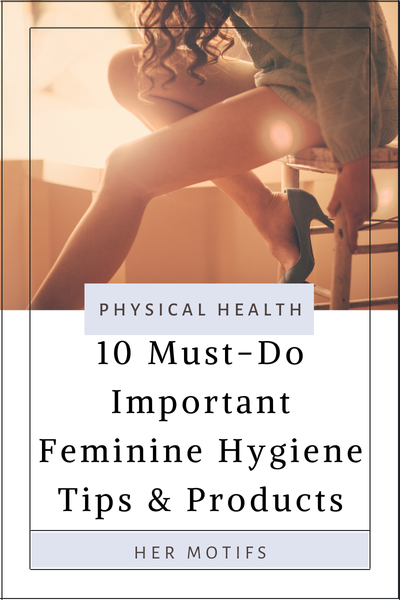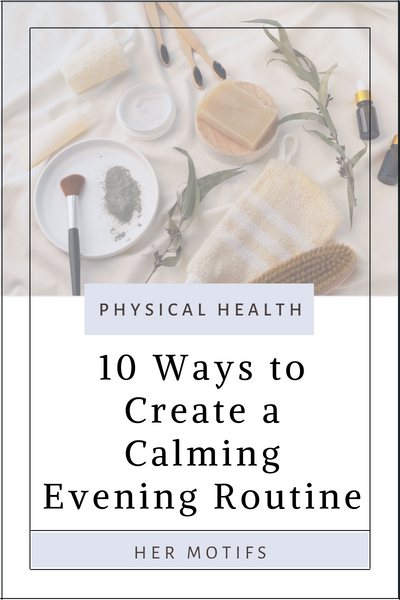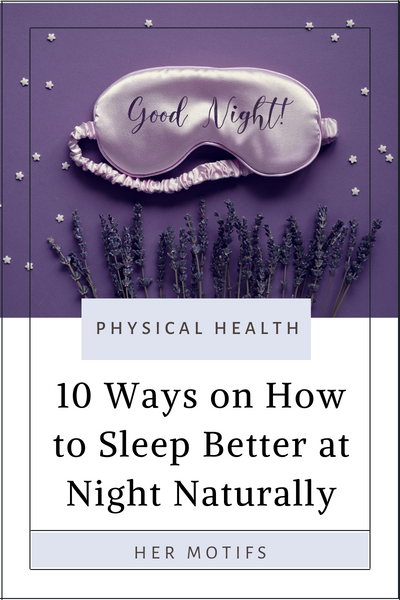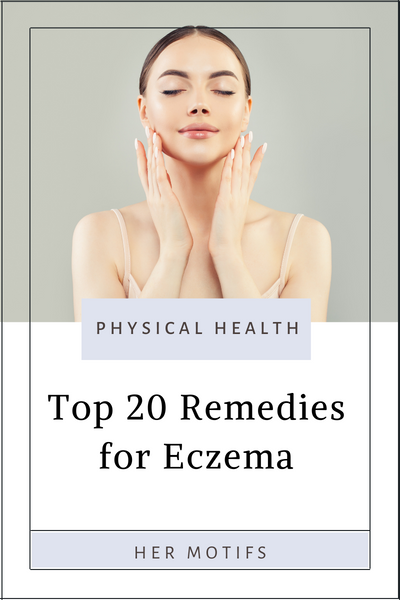10 Signs of a Healthy Period
 Healthy period is a vital aspect of a person’s reproductive and overall well-being.
Healthy period is a vital aspect of a person’s reproductive and overall well-being.
It refers to a menstrual cycle that occurs regularly and without significant discomfort or disruption to daily life.
Menstruation is a natural process that involves the shedding of the uterine lining, accompanied by various hormonal changes. Understanding what constitutes a healthy period is important for individuals to monitor their reproductive health and identify any potential concerns.
In this context, a healthy period encompasses factors such as the regularity and duration of the menstrual cycle, the volume and color of menstrual blood, the presence of symptoms or discomfort, and overall hormonal balance.
By recognizing the characteristics of a healthy period, individuals can better gauge their reproductive health and seek appropriate medical attention if needed. Below are some tips of knowing if you are having a healthy period, this is not conclusive. By understanding what a healthy period looks like, you can empower yourself with knowledge and better monitor your well-being. Whether you’re looking to understand your body, identify potential issues, or simply ensure that your menstrual cycle is a source of vitality and not discomfort, these signs will serve as valuable guidelines on your journey to menstrual health.
NB: PLEASE CONSULT A DOCTOR FOR ANY DIAGONSIS
.
Table of Contents
Period Essentials
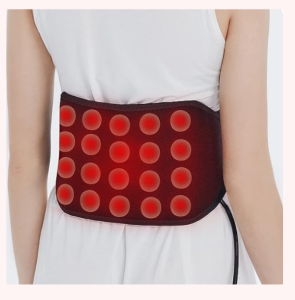 Infrared for Cramps
Infrared for Cramps
Therapy Back Brace for Thigh, Lumbar, Stomach Pain, EMF Free, Auto Off, Smart Controller
- More durable than traditional heating pads.
- Delivers more evenly distributed heat.
- Can be worn for long periods without discomfort
- Can heat it up and detach the cord, will stay hot for long time after detachment
.
.
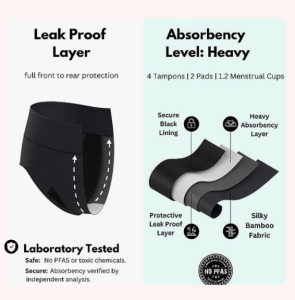 Period Underwear
Period Underwear
No spills, comfortable, save money
-
- 95% Bamboo Rayon/5% Spandex
- Absorbency for up to 4 tampons
- Feels like Regular Underwear: say goodbye to uncomfortable pads
- Sleep safe and sound, whether you lie on your back or front
.
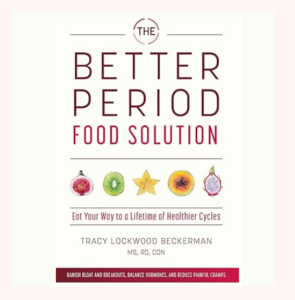 Nutrition for Healthy Period
Nutrition for Healthy Period
Amazing recipes & snacks for a healthy periods
- List food that help alleviate painful period symptoms, and also heal your body
- Banish bloat and breakouts, balance hormones, and reduce painful cramps
.
 Plush Soft Long Robe
Plush Soft Long Robe
The most luxurious, softest, plush, comfortable robes ever
- 100% Polyester, tie closure, machine wash
- Perfect for sensitive for all skin conditions
- Super soft, plush, shawl collar fleece bathrobe
- Perfect for at home spa day, lounging and self care days
.
 Self Care Gift Basket
Self Care Gift Basket
Designed to help you achieve and maintain salon-quality nails at home, by shaping, filing, and buffing for flawless nails wherever you go
- Nail Drill Kit
- Cordless Electric Nail File
- 10 Attachments and LED Light
- Electric Manicure Set with Adjustable Speed
- E-File for Manicure and Pedicure, with Storage Case
.
1. Regular Cycle
A healthy period is typically characterized by a regular menstrual cycle that occurs at consistent intervals, usually ranging from 21 to 35 days.
A regular cycle refers to a consistent and predictable menstrual pattern in terms of timing and duration. Having a regular cycle is an indicator of good reproductive health and hormonal balance.
- Track Your Menstrual Cycle: Keep a record of the start and end dates of your periods to identify patterns and track the length of your cycle. You can use a calendar, a menstrual tracking app, or a period diary to monitor your cycle consistently.
- Maintain a Healthy Lifestyle: Adopting a healthy lifestyle can positively impact your menstrual cycle. Ensure you’re getting regular exercise, eating a balanced diet rich in nutrients, managing stress levels, and getting enough sleep. These factors contribute to overall hormonal balance and promote a regular cycle.
- Seek Medical Advice if Needed: If you experience irregularities in your menstrual cycle or have concerns about its regularity, it’s essential to consult a healthcare professional. They can help identify any underlying health conditions or hormonal imbalances that may be affecting your cycle and provide appropriate guidance or treatment if necessary.
Remember, every person’s menstrual cycle may have slight variations, but maintaining a regular cycle is generally indicative of good reproductive health. Monitoring your cycle, adopting healthy habits, and seeking medical advice when needed can support a regular and healthy menstrual cycle.
.
2. Consistent Duration
A normal period usually lasts between 2 to 7 days. Having a consistent duration from cycle to cycle is a positive sign of menstrual health. Consistent duration refers to the length of time your menstrual flow lasts during each period. Having a consistent duration is a positive sign of a healthy menstrual cycle. Three tips to promote a consistent duration:
- Monitor Your Menstrual Flow: Pay attention to the duration of your menstrual flow during each cycle. Keep track of how many days your period typically lasts. This will help you identify any changes or irregularities in duration.
- Maintain Hormonal Balance: Hormonal imbalances can affect the duration of your menstrual flow. To promote hormonal balance, focus on adopting a healthy lifestyle, including regular exercise, a balanced diet, stress management, and adequate sleep. These factors contribute to overall hormonal health and may help maintain a consistent duration.
- Address Underlying Health Conditions: Certain health conditions, such as polycystic ovary syndrome (PCOS) or uterine fibroids, can impact the duration of your menstrual flow. If you notice significant changes in duration or experience irregularities, it’s important to consult a healthcare professional. They can assess your symptoms, perform necessary tests, and provide appropriate treatment options to address any underlying health conditions.
Every person’s menstrual cycle may have slight variations in duration. However, having a consistent duration is generally considered a positive sign of a healthy menstrual cycle. By monitoring your menstrual flow, maintaining hormonal balance, and addressing any underlying health concerns, you can support a consistent duration and promote overall menstrual health.
.
3. Moderate Flow
A healthy period generally involves a moderate flow. It shouldn’t be too heavy that it interferes with your daily activities or too light that it only requires minimal protection.
A moderate flow refers to the amount of menstrual blood you experience during your period. It is considered a normal and healthy level of menstrual flow. Tips to promote a moderate flow during menstruation:
- Maintain Hormonal Balance: Hormonal imbalances can affect the intensity of menstrual flow. To support a moderate flow, focus on maintaining hormonal balance. This can be achieved through regular exercise, a balanced diet, stress management, and adequate sleep. These factors contribute to overall hormonal health and may help regulate the flow.
- Stay Hydrated: Drinking plenty of water and staying hydrated can help regulate the flow and prevent excessive or heavy bleeding. Proper hydration supports overall health and can contribute to a moderate flow during menstruation.
- Manage Stress Levels: High stress levels can impact hormonal balance and potentially lead to heavy or irregular menstrual flow. Engage in stress-management techniques such as mindfulness meditation, deep breathing exercises, or engaging in activities you enjoy. Finding healthy ways to manage stress can help promote a moderate flow during menstruation.
Maintaining hormonal balance, staying hydrated, and managing stress levels, you can support a healthy and moderate flow during menstruation. If you have concerns about your menstrual flow, it’s always best to consult a healthcare professional for personalized advice and guidance.
.
4. Bright Red Blood
The blood during a healthy period is usually bright red in color, indicating a fresh and normal shedding of the uterine lining. Bright red blood is a common characteristic of menstrual blood, especially during the early days of the menstrual cycle. Bright red blood during menstruation tips:
- Normal Variation: Bright red blood is considered a normal variation of menstrual blood. It typically indicates fresh blood and is often seen at the beginning of the menstrual cycle. This color is associated with a healthy shedding of the uterine lining.
- Normal Menstrual Flow: Bright red blood throughout your menstrual cycle is a normal occurrence. As your uterus sheds its lining, the blood is released and appears bright red.
- Adequate Blood Flow: Bright red blood can also indicate that your blood flow is healthy and sufficient. It suggests that the blood is flowing freely and not being retained in the uterus.
Remember, individual experiences with menstrual blood may vary, and the color of menstrual blood can change throughout your cycle.
Bright red blood at the beginning of your period is typically a normal occurrence. By maintaining good menstrual hygiene and monitoring any changes in your flow, you can ensure a healthy menstrual experience. If you have any concerns or questions, it’s always best to seek guidance from a healthcare professional.
.
5. Minimal Clotting
While small blood clots can be normal, a healthy period typically involves minimal clotting. Large or frequent clots may indicate an underlying issue and should be evaluated by a healthcare professional.
Minimal clotting during menstruation refers to the absence of large or excessive blood clots in menstrual flow. While small clots can be normal, significant clotting may indicate an underlying issue. Below are some tips:
- Stay Hydrated: Drinking an adequate amount of water can help keep your blood flow more fluid and reduce the likelihood of excessive clotting. Proper hydration supports overall blood circulation and may help minimize clot formation during menstruation.
- Maintain a Balanced Diet: Consuming a balanced diet rich in nutrients can contribute to healthier menstrual flow. Include foods that are high in antioxidants, such as fruits, vegetables, and whole grains, as they promote good blood circulation and help reduce clotting tendencies.
- Practice Gentle Exercise: Engaging in regular physical activity, such as walking, yoga, or swimming, can promote healthy blood flow and reduce clotting. Gentle exercises help stimulate circulation, prevent blood from pooling, and may help minimize clot formation during menstruation.
It’s important to note that small clots during menstruation are generally normal and not a cause for concern. However, if you notice large or frequent clots, or if they are accompanied by severe pain or heavy bleeding, it’s advisable to consult a healthcare professional for further evaluation. They can determine if there are any underlying conditions contributing to excessive clotting and provide appropriate guidance and treatment.
Staying hydrated, maintaining a balanced diet, and engaging in gentle exercise, you can support healthier menstrual flow and potentially reduce clotting tendencies.
.
6. Minimal Pain
Mild cramps or discomfort during a period is common, but a healthy period should not be excessively painful. While some discomfort or mild cramping is common, severe pain or debilitating menstrual cramps may indicate an underlying issue. Below are some tips on how to minimize pain during menstruation:
- Maintain a Healthy Lifestyle: Adopting a healthy lifestyle can help reduce menstrual pain. Regular exercise, a balanced diet, and managing stress levels can contribute to overall well-being and alleviate menstrual discomfort.
- Use Heat Therapy: Applying heat to the lower abdomen can help relax the muscles and relieve menstrual cramps. You can use a heating pad, hot water bottle, or take a warm bath to soothe the area and reduce pain.
- Try Over-the-Counter Pain Relief: Over-the-counter pain medications such as ibuprofen or acetaminophen can help alleviate menstrual pain. It’s important to follow the recommended dosage and consult with a healthcare professional if you have any concerns or if the pain persists.
If you experience severe or debilitating pain, or if your menstrual pain significantly affects your daily activities and quality of life, it’s important to consult with a healthcare professional. They can evaluate your symptoms, rule out any underlying conditions, and provide appropriate treatment or management options to help you find relief.
.
7. Balanced Mood
Hormonal changes during the menstrual cycle can affect mood, but a healthy period is typically associated with stable emotions and minimal mood swings.
Having a balanced mood during menstruation is important for overall well-being and mental health. Hormonal fluctuations during this time can sometimes lead to mood swings, irritability, or emotional changes. Tips to help maintain a balanced mood during menstruation:
- Practice Self-Care: Engage in activities that help promote relaxation and reduce stress. This can include things like taking a warm bath, practicing meditation or deep breathing exercises, spending time in nature, or engaging in hobbies that bring you joy and help you unwind.
- Get Adequate Sleep: Prioritize getting enough sleep during your menstrual cycle. Lack of sleep can exacerbate mood swings and emotional imbalances. Aim for a consistent sleep schedule and create a calming bedtime routine to ensure quality rest. If you have trouble sleeping, try techniques like avoiding screens before bed, creating a comfortable sleep environment, and practicing relaxation techniques.
- Maintain a Healthy Lifestyle: Eating a balanced diet, staying hydrated, and engaging in regular exercise can have a positive impact on your mood. Proper nutrition and hydration help support your body’s hormonal balance, while exercise releases endorphins, which are natural mood enhancers. Aim for a well-rounded diet rich in fruits, vegetables, lean proteins, and whole grains, and incorporate regular physical activity into your routine.
Experiencing severe or persistent mood changes, depression, anxiety, or other emotional symptoms that significantly interfere with your daily life, it’s important to seek support from a healthcare professional. They can provide guidance, evaluate your symptoms, and recommend appropriate interventions or treatments to help you manage your mood during menstruation.
.
8. Energy Levels
Having consistent energy levels throughout your period is a positive sign. While some fatigue or tiredness may be normal, extreme exhaustion or prolonged fatigue could indicate an imbalance or other health concerns.
Managing energy levels during menstruation is crucial for maintaining productivity and overall well-being. Hormonal fluctuations can affect energy levels, leading to fatigue or low energy. How to increase your energy levels during menstruation:
- Prioritize Rest and Sleep: Make sure you are getting enough sleep and allowing your body to rest during your menstrual cycle. Aim for the recommended 7-9 hours of quality sleep each night. Create a soothing sleep environment, establish a consistent sleep schedule, and practice good sleep hygiene habits to promote restful sleep.
- Eat Nutritious Foods: Pay attention to your diet and consume nutritious foods that provide sustained energy throughout the day. Include a balance of complex carbohydrates, lean proteins, healthy fats, and fiber-rich foods in your meals. Avoid excessive consumption of sugary or processed foods, as they can lead to energy crashes.
- Engage in Regular Physical Activity: While it may seem counterintuitive, engaging in regular exercise can actually help boost energy levels during menstruation. Physical activity releases endorphins, improves blood circulation, and increases oxygen flow to the muscles, providing a natural energy boost.
Additionally, listen to your body and give yourself permission to rest when needed. Recognize that energy levels may naturally fluctuate during menstruation, and it’s important to honor your body’s needs.
If you experience chronic fatigue or severe energy disruptions that significantly impact your daily life, it may be beneficial to consult with a healthcare professional to rule out any underlying health conditions or explore additional strategies for managing energy levels.
.
9. Minimal PMS Symptoms
PMS (premenstrual syndrome) symptoms, such as bloating, breast tenderness, or mood changes, are common but should be manageable and not significantly interfere with daily life during a healthy period.
Experiencing minimal premenstrual syndrome (PMS) symptoms can greatly enhance the overall quality of life during menstruation. While PMS symptoms can vary from person to person, here are three examples of minimal PMS symptoms:
- Mild Mood Changes: Minimal PMS symptoms may involve only slight mood changes, such as feeling slightly more emotional or sensitive than usual. These mood changes are manageable and do not significantly impact daily activities or relationships.
- Mild Physical Discomfort: With minimal PMS symptoms, any physical discomfort experienced during menstruation is mild and easily manageable. This may include mild abdominal cramps or discomfort, minimal breast tenderness, or minor bloating. The symptoms are not severe enough to interfere with normal daily functioning.
- Stable Energy Levels: Women with minimal PMS symptoms tend to experience stable energy levels throughout their menstrual cycle. They do not feel excessively fatigued or lethargic during the premenstrual phase and can maintain their usual levels of productivity and engagement in daily activities.
It’s important to note that the severity and presence of PMS symptoms can vary greatly among individuals. While minimal PMS symptoms are desirable, it is normal for some women to experience more pronounced symptoms. If your PMS symptoms are severe, affecting your daily life, or causing significant distress, it’s advisable to consult with a healthcare professional for appropriate evaluation and management options.
.
10. Regular Ovulation
A healthy period often indicates regular ovulation, which is essential for reproductive health. Regular ovulation suggests that hormonal balance and overall fertility are functioning optimally.
.Regular ovulation is an important aspect of a healthy menstrual cycle. It indicates that the reproductive system is functioning properly and can contribute to overall fertility. Here are three examples of regular ovulation:
- Track Your Menstrual Cycle: Keep track of your menstrual cycle using a calendar, mobile app, or a menstrual cycle tracking tool. This will help you identify patterns, track the length of your cycle, and estimate when ovulation is likely to occur. Pay attention to any changes or irregularities in your cycle, as this information can be helpful when discussing your menstrual health with a healthcare professional.
- Basal Body Temperature (BBT) Pattern: Tracking your basal body temperature can provide insights into your ovulation patterns. With regular ovulation, you may observe a distinct temperature rise following ovulation and a consistent pattern of temperature fluctuations throughout your cycle. This indicates that ovulation is occurring consistently and at the expected time.
- Cervical Mucus Changes: Regular ovulation is often associated with changes in cervical mucus. As you approach ovulation, your cervical mucus becomes more abundant, clear, and stretchy, resembling the consistency of egg whites. This fertile cervical mucus facilitates the movement of sperm and supports the chances of successful fertilization.
It’s important to note that irregular ovulation or the absence of ovulation (anovulation) can occur due to various factors and may impact fertility. If you have concerns about your ovulation patterns or are experiencing difficulties in conceiving, it’s recommended to consult with a healthcare professional who can provide guidance and appropriate evaluation.
.
Conclusion
In conclusion, a healthy period is an important indicator of overall reproductive health and well-being. Monitoring and understanding the signs of a healthy period can help women stay informed about their menstrual health. There are many other signs for a healthy period, in addition to this article.
It’s important to note that every woman’s menstrual cycle may vary slightly, and occasional changes or deviations from the norm can be normal. However, if you experience persistent or significant changes in your menstrual cycle or have concerns about your period, it’s always advisable to consult with a healthcare professional. Regular check-ups and open communication with your healthcare provider can ensure that any potential issues are addressed promptly and that you receive the appropriate care and support for your menstrual health.
- 100 Valentine Lovers Questions - February 24, 2025
- 2025 New Year Growth Quotes - February 24, 2025
- 2025 Inspiring Self Love Quotes - February 24, 2025
